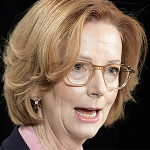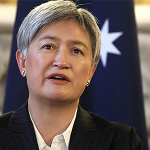The economy is picking up pace. After a dreary April, which saw no growth, the UK economy grew by 0.4 per cent in May. It’s the strongest three-month growth rate since January 2022, with the UK economy expanding by 0.9 per cent leading up to May, compared to the three months leading up to February.
A GDP boost in May was expected, as April’s wet weather put a damper on growth. Still, today’s update from the Office for National Statistics was better than expected, as economists had forecast a 0.2 per cent uptick. While the 1.9 per cent increase in construction can be accounted for as making up for lost time in April, the services sector continues to be the largest contributor to growth: with the wholesale-retail trade and repair of motor vehicles and motorcycles sub-sector performing best, with a monthly growth rate of 1.8 per cent.
This is all good news for Labour, which has put growing the economy front and centre in their first few days in office. Chancellor Rachel Reeves has stopped short of taking credit for this morning’s figures, but has jumped on the opportunity to draw a parallel between this morning’s update and her pledge at thes start of the week to make economic growth a ‘national mission’.
But what Labour is really set to gain in the second half of this year is a better growth narrative: the Tories were deeply unlucky heading into an election with the last monthly update showing no growth. It is likely to be an anomaly compared to other monthly updates, which all point towards an economy picking up (at least some) steam, as the weight of last year’s recession and repeated interest rate hikes finally start to let up. Once interest rates start to come down, slowly – expected by the markets to happen in late summer or early autumn (better growth figures may actually postpone a rate cut once again, as the Bank will feel less pressure to start its rate cutting process if it’s not on the brink of pushing the UK back into recession) – these growth figures should continue to improve.
Of course Labour will claim the political credit, despite much of what’s set to happen this year being determined by previous public policy. All these one-off updates renew questions, each time they are announced, about why Rishi Sunak opted for a surprise summer election rather than an autumn one, when the economic landscape was all-but-guaranteed to look better than it did this spring.
Still, Labour won’t be able to rest on modest updates if it’s serious about using growth (not tax hikes or spending cuts) to fill in the many holes in the public finances. Even if 2024 produces a bigger economy than originally forecast, Britain is still a long way off a sustained growth rate that can really account for all the growing costs, especially around public services like healthcare and the state pension. As Labour never fully accounted for its spending pledges (around the NHS long term workforce plan, for example), it’s going to need something far more spectacular than a few better-than-expected monthly growth rates to see its plans through.








